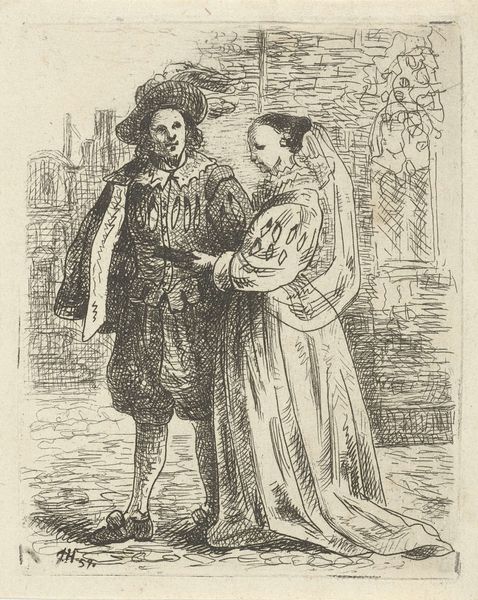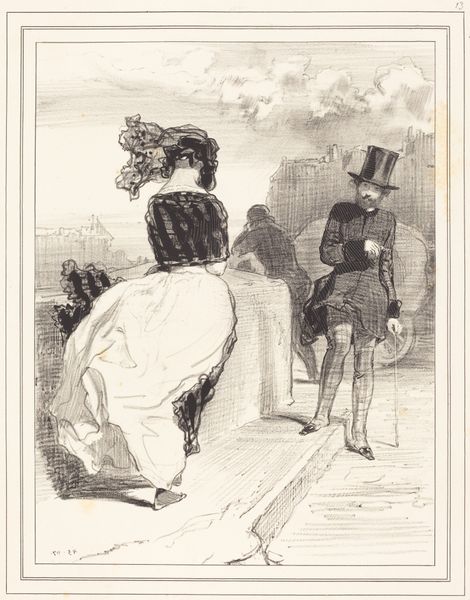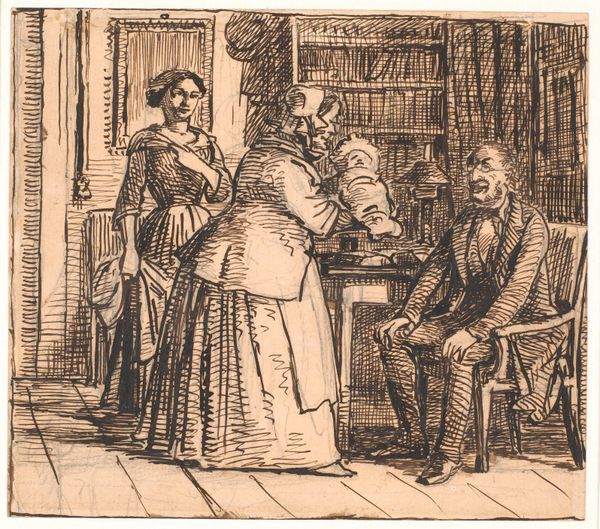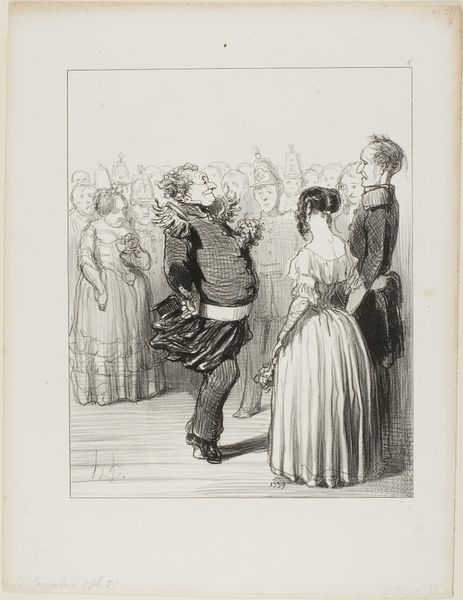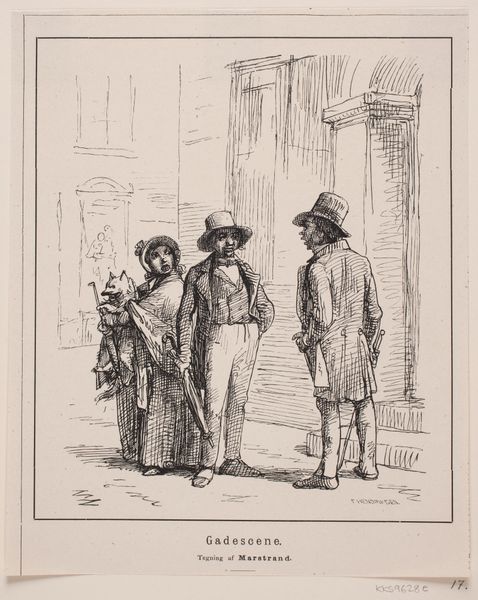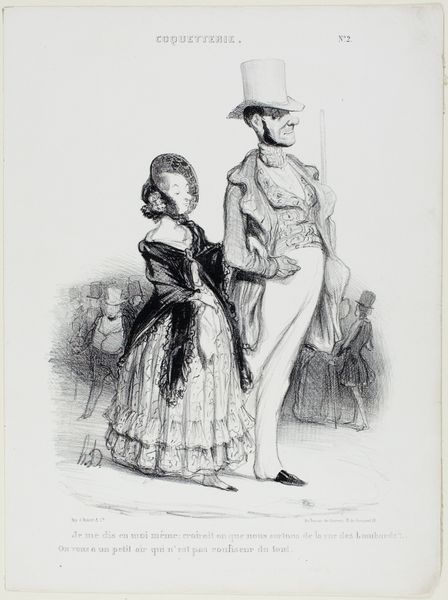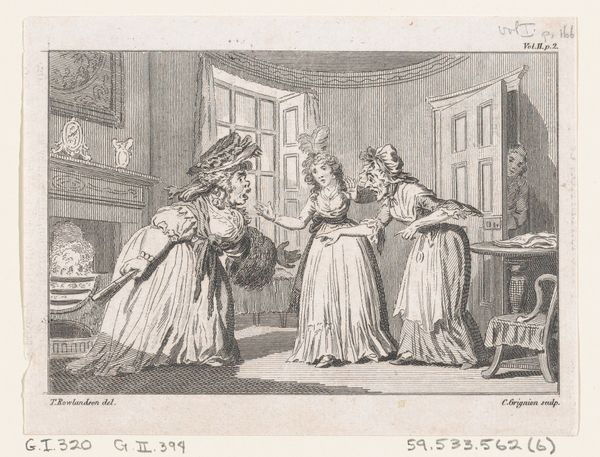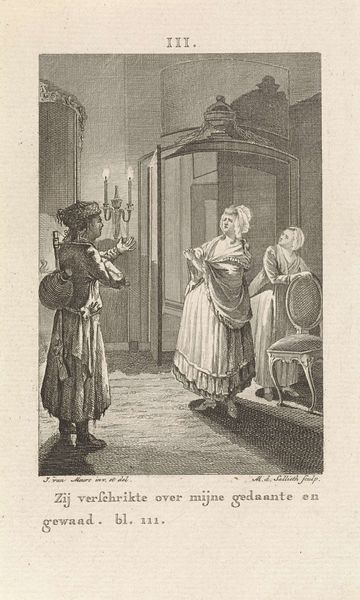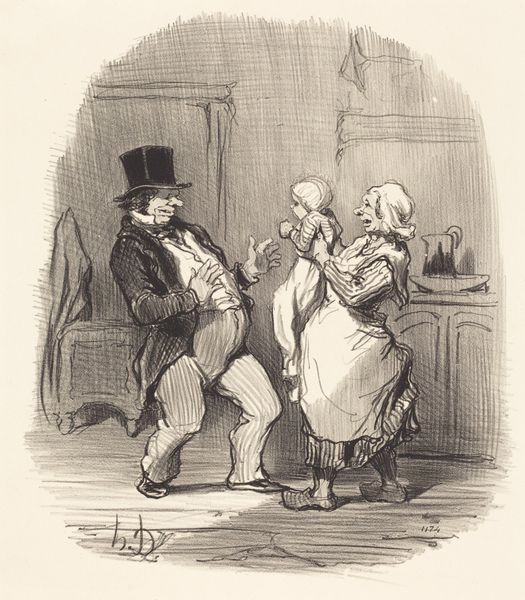
Dimensions: 177 mm (height) x 243 mm (width) (bladmaal)
Curator: This pen and ink drawing, created in 1882, is titled "Den Forvandlede Brudgom," which translates to "The Transformed Bridegroom." Editor: Immediately, there's a theatricality to this scene. The rendering style lends itself to drama—crisp lines emphasize elaborate costuming against a minimal setting. Curator: Precisely. It's the work of an artist deeply engaged with the societal expectations of marriage. Consider the narrative being constructed here; on one side stands what we can assume is the bride, looking regal and ornate, accompanied by what could be a bridesmaid. Opposite is what seems to be a transformed groom. The artist uses satire to invite discussions on roles and facades. Editor: And I'd argue it pushes us to confront how performance shapes our identities, especially within institutions like marriage. Who is allowed to perform power? The groom, with his confident stance and ostentatious attire, presents a deliberate image. What are the unspoken critiques about this carefully crafted persona, and perhaps even gender expectations? Curator: One way to think of it is through its art-historical context; it belongs to the Romantic period. Even while employing caricature and biting social commentary, the drawing shares with romanticism its investment in subjectivity. And if you ask, what is this scene ultimately about? It is perhaps an exploration of one's subjectivity entering the sphere of social and marital expectation. The chair as well hints at these social constructs. Editor: The single chair as the silent observer to this societal display serves as a stark reminder that for some there’s always been restricted participation in established power structures. This image underscores art's ability to reveal nuanced intersectional positions in 19th century Europe. Curator: This close observation shows how genre-based work opens pathways into broad social dialogues about how power circulates within and beyond domestic boundaries. Editor: Spot on. It calls us to investigate and, potentially, transform our own societal roles and perspectives. It is never just "a scene." Curator: Exactly, it's about sparking conversation. Editor: I leave this pondering on how social roles and relationships get constructed and, ideally, get constantly reshaped for something better.
Comments
No comments
Be the first to comment and join the conversation on the ultimate creative platform.

